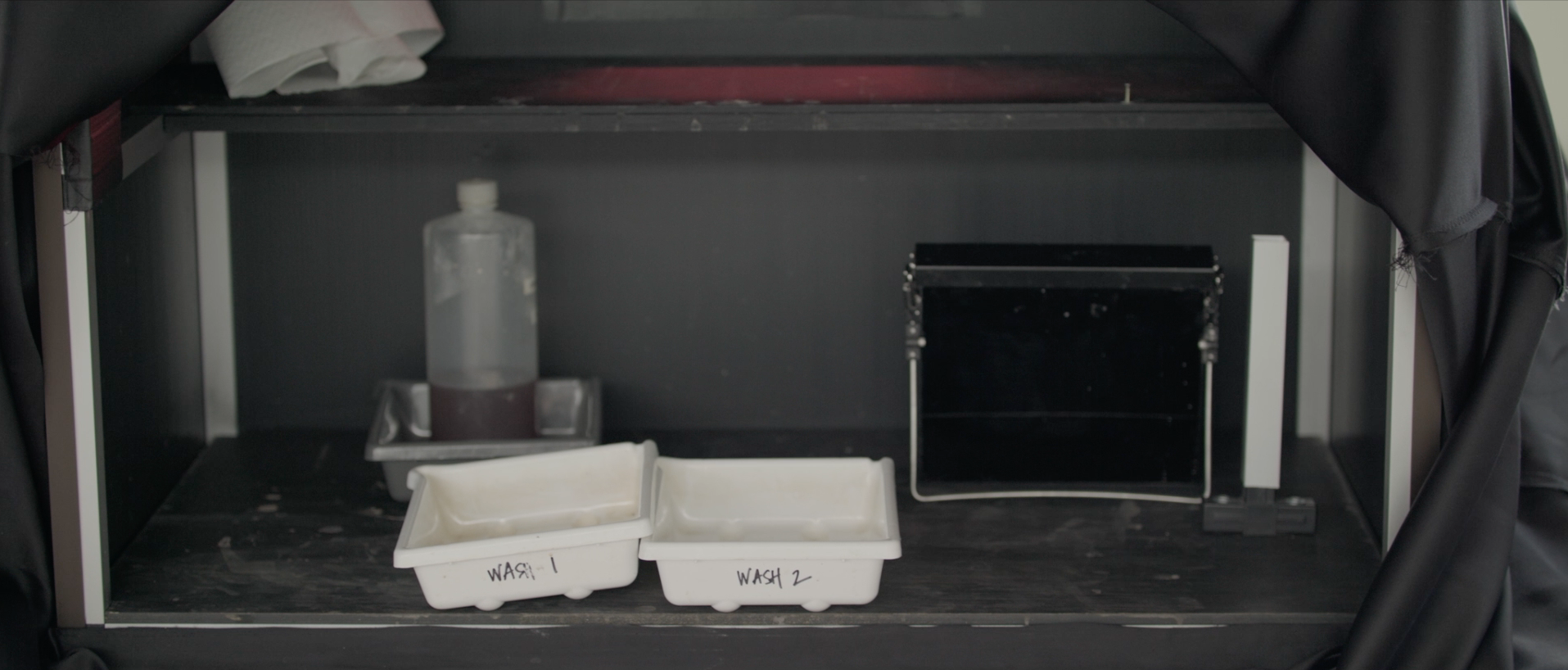
A behind the scenes look at wetplating
Two Finns
This behind the scenes video documents the day I was lucky to photograph portraits of Neil Finn and his son Liam on the eve of their immaculate performance in the infamous Meeniyan Town Hall. What made this extra special is that Meeniyan is my home town and this makeshift studio is my old basketball stadium from when I was a kid. The film was shot and edited by Mick Hurren and the music “Back to Life’ is by non other than the two Finn’s themselves.
Wet plate photography, a 19th-century photographic process, is a true embodiment of craftsmanship in the art of image-making. Unlike modern digital photography, which relies on instant, automated processes, wet plate photography requires meticulous, hands-on preparation. Each image is crafted on a glass or metal plate, which is manually coated with a light-sensitive chemical emulsion. The entire process, from coating to exposure to development, must be completed while the plate is still wet, typically within a tight window of about 15 minutes. This method is not just about capturing a moment but creating a physical artifact—each plate is a one-of-a-kind, handmade piece. The inherent imperfections and rich, organic textures that emerge in wet plate images are impossible to replicate with modern techniques. Today, this labor-intensive process is valued for its tangible connection to the origins of photography and is cherished by artists who prioritize the artisanal, handmade quality that contrasts sharply with the mass-produced nature of digital images. Wet plate photography stands as a celebration of the slow, deliberate art of creating something uniquely beautiful by hand.
*******
The Wetplate Photography Process
This is a simple breakdown of the steps involved in making a Wetplate.
•
Preparing the Plate:
Your portrait begins with a clean glass or metal plate. The photographer carefully coats this plate by hand with a special, sticky liquid called collodion. This liquid will help capture your image.
•
Into the Darkroom:
Once coated, the plate is taken into a darkroom, a space with dim lighting to prevent unwanted exposure. Here, the plate is dipped into a bath of silver nitrate, a solution that makes it sensitive to light. After a few minutes, the plate is ready to capture your portrait.
•
Setting the Scene:
While the plate is being prepared, you’ll be guided into position in front of the camera. Because the process is slow and the image is incredibly detailed, you’ll need to hold still during the exposure, which might take a few seconds. Don’t worry—the photographer will help you get comfortable and guide you on how to sit or stand.
•
Capturing the Moment:
With everything set, the photographer places the wet plate into the camera. When the moment is right, the lens cap is removed to expose the plate to light, capturing your image in just a few seconds. This is where the magic happens—your likeness is imprinted onto the plate in a way that’s both timeless and unique.
•
Developing the Image:
Immediately after your portrait is taken, the plate is rushed back into the darkroom. There, the photographer carefully pours a special developer over the plate, revealing your image. As the picture slowly appears, it’s like watching a piece of history come to life right before your eyes.
•
Finishing Touches:
The plate is then washed, fixed, and dried to make sure your image stays intact for years to come. Depending on the photographer’s style, they may also add a protective varnish to give the plate a beautiful finish.
•
A Piece of Art, Just for You:
Once the process is complete, you’ll have a one-of-a-kind, handcrafted portrait on a metal or glass plate. Each portrait is truly unique, with its own textures and details that can never be exactly replicated. It’s more than just a photograph—it’s a piece of art made especially for you.
Varnishing
Varnishing a wet plate is crucial for sealing and protecting the delicate collodion image from physical damage, moisture, and UV light, ensuring its longevity. Gum Sandarac, a natural resin derived from Mediterranean trees, is the traditional varnish ingredient. It provides a hard, glossy finish while preserving image clarity.
Producing the varnish from raw Gum Sandarac is labor-intensive. The resin must be carefully dissolved in alcohol and filtered many times to remove impurities such as debris, bugs & tree fibres, a process that requires patience and skill to achieve a perfectly clear and smooth solution. This handmade touch is vital for quality results.







